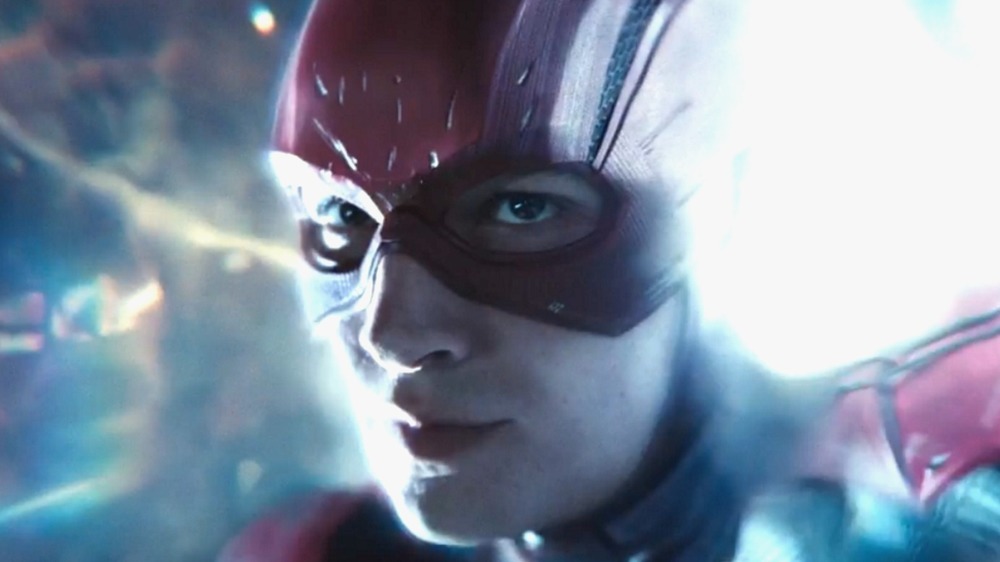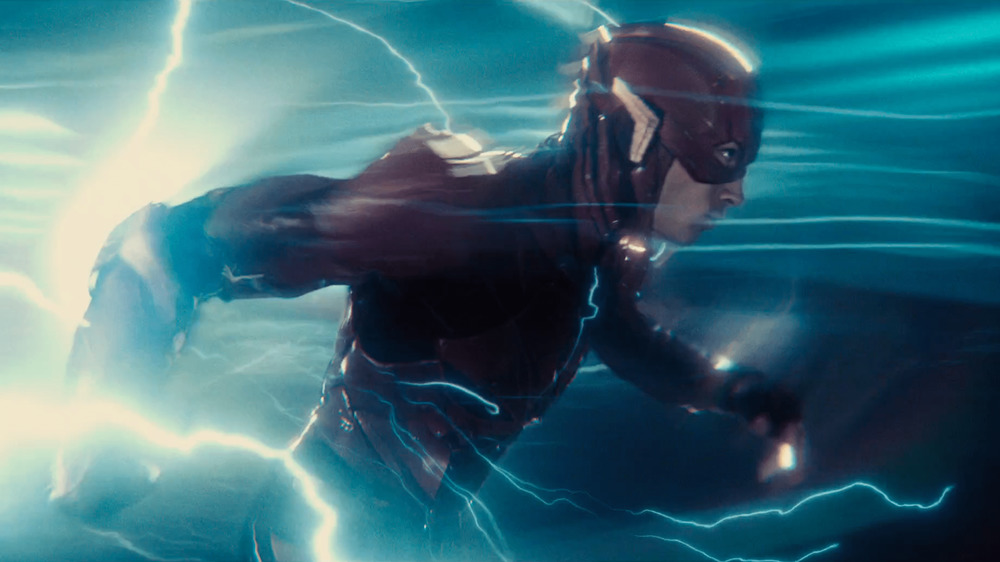The Flash Scene In Justice League That Warner Bros. Never Liked
If you click a link and buy a product or service from a merchant, we may be paid an affiliate commission.
Warner Bros. studio executives famously didn't like director Zack Snyder's four-hour, full-fat cut of Justice League when they first saw it. It was too long and too serious, which led to the ill-fated decision to bring in Avengers' Joss Whedon to rewrite it. But it wasn't just the overall length and tone that made execs wary — there were specific scenes they didn't like, too. The scene that Warner Bros. had the biggest problem with was the one where the Flash (Ezra Miller) runs so fast that he rewinds time and saves the world. The scene was deleted when Whedon took over the film but has been restored for the Snyder Cut, now streaming on HBO Max.
In the scene, which comes toward the end of Zack Snyder's Justice League, Steppenwolf (Ciarán Hinds) has assembled and activated the Mother Boxes, which start to explode and destroy Earth before Cyborg (Ray Fisher) and Superman (Henry Cavill) can stop them with an assist from the energy field that forms around Barry Allen when he runs. The heroes are getting blown to smithereens when Allen picks up the pace and breaks the light barrier, running so fast and giving off so much energy that the flow of time is reversed. His re-formed friends get another shot at destroying the Mother Boxes, and this time, they succeed.
There's a lot going on in the scene — viewers need to visually understand what's happening with Cyborg, the Flash, Superman, and Darkseid (Ray Porter) while comprehending the rules of time travel and taking in all of the special effects that are happening. "It can be really easy to lose track of the story you're trying to tell and not lose the thread for that kind of sequence," special effects supervisor Kevin Andrew Smith told Yahoo! Entertainment.
Warner Bros. execs worried the scene was too confusing
Zack Snyder said the rewind was always part of his vision for Justice League's climax, but Warner Bros. had reservations. "That was always a bone of contention with the studio: They didn't want him running back through time there," the director told Yahoo!.
Indeed, when Snyder left the film after the death of his daughter and Whedon took over, the scene was excised. In the theatrical version, Barry Allen doesn't warp time at all, and Victor Stone and Superman are able to separate the Mother Boxes themselves in the film's Russia-set climax.
The Flash's ability to bend time sets up the Justice League sequels Snyder planned on making, where it would have played a pivotally important role. Snyder told Yahoo! that Lex Luthor (Jesse Eisenberg) would tell Darkseid that if he killed Lois Lane (Amy Adams), Superman would succumb to the nefarious Anti-Life Equation teased in the director's cut and help Darkseid take over the world. So the Flash would have to go back even further in time and save Lois. "That's really the linchpin of the whole thing," Snyder said.
Snyder's version definitely works better, though it's totally understandable that Warner Bros. was worried it would be too confusing. Still, the Flash's ability to travel through time is such an important part of his character that it's kind of hard to believe in retrospect that Whedon didn't figure out a way to include it in the climax of the theatrical version. Barry Allen's ability will likely be a key piece of the standalone Flash movie that's currently in the works for a projected 2022 release.

